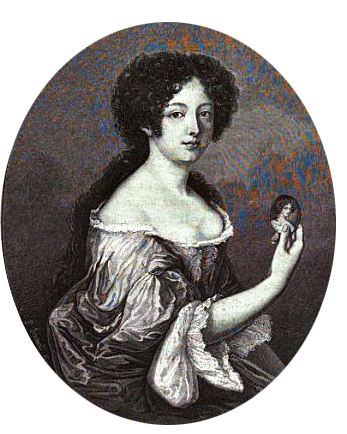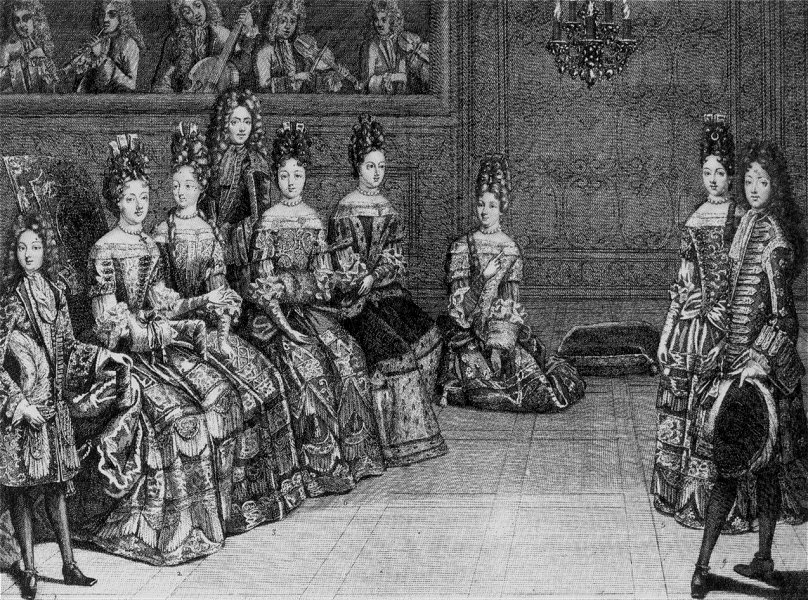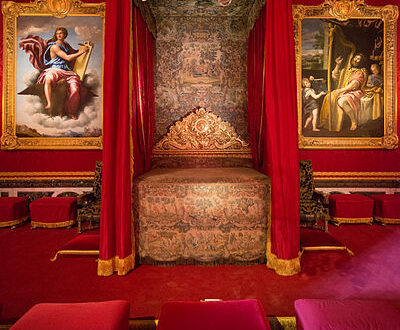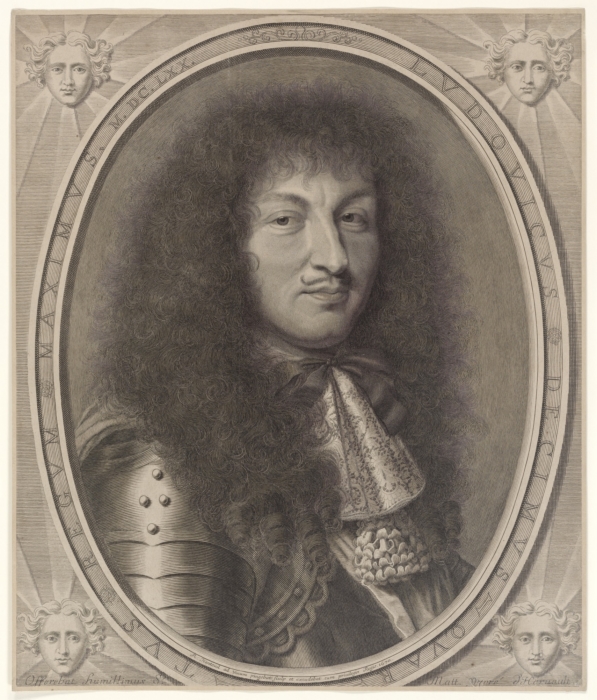La Fronde
Long before the Revolution shook France and turned the country upside down, there was the Fronde. A sort of civil war lasting from 1648 to 1653. During this time of general unrest, Louis XIV, still a child, was forced to flee his own residences to escape a violent mob, as members of his own family sought to gain power and influence over the Kingdom.
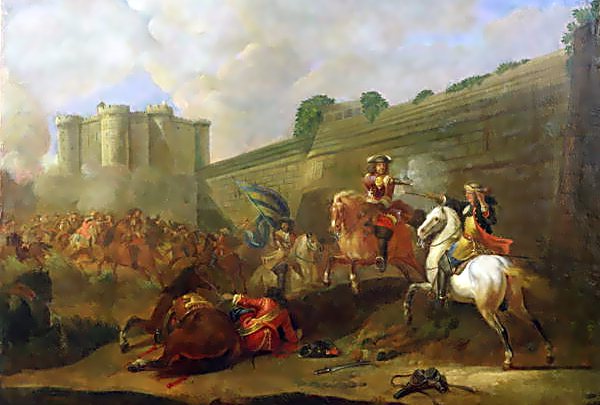
The word Fronde itself means as much as a slingshot used by children to fire little stones and the events that caused it date back to the early 1640’s. The Franco-Spanish War, which had begun in 1635 and still raged on in 1648, had weakened not just the Spanish, but also the French. The war began under the reign of Louis XIII and was continued by his widow and Regent of France, Anne d’Autriche, along with Cardinal Mazarin. Although France had the better cards, it was still a slightly difficult time for its inhabitants. Across the borders of France, raged the English Civil War and influenced the thinking of some French folks, who suddenly realised they might not have to be fine with everything their sovereigns do.
It was not the general population, those who worked hard to get something on their plates, but the parlements who raised their voices first. In contrary to the English parliament, the French parlements where more courts of appeal, who had the right to act against the Monarch by refusing to register decrees and they had a bit of an issue. They felt their ancient liberties and rights were under attack by Cardinal Mazarin, who raised taxes higher and higher in order to pay for the war. The higher they rose, the higher grew their discontent. One of these taxes was the taille, a tax that had to be paid by non-noble landowners. Since the nobility refused to be taxed, based on ancient rights, the bourgeoisie had to see how to come up with enough money to pay the rising taxes.
A other tax was the aisés, a tax based on wealth, which was registered by the parlement of Paris in 1644 under the condition that neither the bourgeoisie of Paris nor members of the parlement had to pay it. In January 1648, during a lit de justice, seven new tax edits were submitted and met strong protests, because they also affected many members of the parlement this time. Members who only paid little or no taxes at all up to this point. What enraged them even more was the fact the crown sold more and more offices. Since the members of the parlements, in most cases, had bought their right to be part of it, those new rights smallered their income if they planned to sell their office. On top of this, the crown also shortened their wages.

In their opinion it was pretty much all Mazarin’s fault. Their King was still a small child, his mother and Regent did not have the experience with politics, thus trusted much of it into the hands of Mazarin. It was not the first time people where unhappy with him either, several plots had been plotted already, but in vain. Mazarin grew more powerful by the day. While it were mostly nobles who opposed him in the past, the opposition now shifted to the parlements of various cities all over France.
The tension was great already by April 1648 as Mazarin aimed for the paulette. A tax dating back to 1604, which had to be paid to the crown by holders of various government and judicial offices. Again, he met with strong protests and Anne d’Autriche had to intervene in order to calm the situation a little. The Parisian parlement not only refused to register the tax, but also condemned most of the previous taxes. Things suddenly did not look to well for the Monarchy, as more and more voices joined the chant and their financial means were close to non-existent.
Until August and the victory of the Prince de Condé at Lens, after which the general unhappiness vanished a little. The conseil d’en-haut, consisting of Anne d’Autriche, Cardinal Mazarin, the late King’s brother Gaston, the chancellor of France, Charles de La Porte and Léon Bouthillier, decided to take advantage of the situation by arresting the three loudest voices. Those of Henri Charton, René Potier de Blancmesnil and Pierre Broussel. The latter was rather popular among the Parisians and his arrest sent the whole city into chaos. The Parisians demanded the immediate release of Pierre Broussel and around one thousand two hundred sixty barricades were erected all over the city. The chaos was the greatest around the Palais-Cardinal, now the Palais-Royal, which back then was the home of Cardinal Mazarin. Shouts of vive le roi, point de Mazarin! echoed through all the city and the chancellor of France was chased by a violent mob. He managed to seek shelter at the Hôtel de Luynes, which was shortly after set aflame. It was the 27th of August and Louis XIV was not yet eleven years old as he had to witness for the first time how the Parisians turned into violent blood-shedding mob.
For Regent and Cardinal, there was no other option to restore peace than to release those that had been arrested. Most of the armed forces were away to fight the Spanish and the few musketeers and guards left, hardly a match for a whole city.
After Paris had calmed a little, the court moved to Rueil and things began to look a little better once more. Condé offered his full support to Anne d’Autriche and together with Gaston de France, Duc d’Orléans, he set out to talk with the parlement. They did not have too much success with it and Anne d’Autriche was forced to agree to the terms of the parlement…. and then cards changed once more, with the peace was singed with the Holy Roman Emperor and allowed France, although still at war with Spain, to pull some of their troops back home.
At the night from January 5 to 6, all seemed normal in first. The court, including Queen, King and the small petit Monsieur, resided in Paris again, after previously having stayed in Rueil and Saint-Germain. Epiphany was celebrated as usual and everyone went to bed as usual, but Anne d’Autriche rose again shortly after and her children were woken and hastily dressed. Through a secret corridor, they sneak into the garden of the Palais, where carriages already waited to bring them safely to Saint-Germain. Their absence was swiftly noted and on January 8, Cardinal Mazarin declared an enemy of State and King. This shows how the King himself was never a reason for the uprising and how the issue lay with his Prime Minister and not the King himself. Louis XIV, now eleven years old, is seen as the indisputable person of authority in the matter, while Cardinal Mazarin is seen as someone who overreaches and seeks to take control over everything, not for the King’s sake, but for his own.

One day later, on January 9, troops lead by the Prince de Condé moved to lay siege to Paris, while the Parisians gathered troops themselves. They trusted the command of those into the hands of the Prince de Conti, Condé’s younger brother. What happened next is one big mess. One Prince of the Blood lays siege, while a other tries to break the siege. Other princes and high-ranking nobles leave court. The Duc de Longueville, Duc d’Elbeuf, Duc de Bouillon, the Prince de Marcillac and the Comte de la Mothe-Houdancourt join the parlement forces. The Arsenal and Bastille are under attack. Paris floods. The Duc de Beaufort joins the party. The Parlement de Paris urges other regions of France to join the uprising. The Duc de Longueville travels to Normandy in order to raise the province, while his wife, the sister of Condé and Conti, makes a lot of noise and joins the revolt. Later she gives birth to a son, fathered by her lover, in the City Hall and names him Charles-Paris. Several other provinces rise up, a famine shakes Paris and the prices for bread double, all the while battles are fought all around the city. The Comte d’Harcourt, father of the Chevalier de Lorraine, is appointed governor of Normandy by the Regent.
The Peace of Saint-Germain of April 1st 1649 calmed the situation a little, but not for too long. Paris was full with pamphlets against Mazarin and the provinces unhappy with their Governors. While people clashed and barricades went up in the provinces, it was attempted to solve the situation a little more behind the scenes in Paris. Mazarin managed to get rid of some enemies, creating new ones instead, and the relations between Mazarin and Condé became rather tense. The latter hoped that he might get a say in government issues after he saved the city, but Mazarin doesn’t quite like the idea. Mazarin was not the only one unhappy about it and some of the frondeurs even took his side and opposed Condé, thus a new phase of the Fronde began, the Fronde des princes.
On January 4 1650 preparations went underway, in total secrecy, to have Condé and Conti arrested. Jean François Paul de Gondi, one of the initiators of the Fronde, was promised a Cardinal’s hat by Mazarin and the Regent in order to silence him and lure him to their side. A few days later, on January 18, Condé, Conti and the Duc de Longueville were arrested and brought to Vincennes. These arrests did not go down well with their friends, who rushed to raise the provinces once more. Again, the court leaves Paris and this time heads to Rouen in order to lay siege to the city, whic was under control of the Duchesse de Longueville. She fled the city later and the royal troops were victorious, but it was only a small victory. More cities were rebelling and Henri de la Tour d’Auvergne, Vicomte de Turenne, plans to march on Vincennes. The prisoners are thus moved to Marcoussis.
The city of Paris was trusted into the hands of Gaston de France, who held quite a few balls during this time, as the royal family travelled from city to city with Mazarin in order to restore peace. Their progress was swift until they reached Bordeaux. The situation there was not so easily to pacify and the whole area full with frondeurs. On top of that, the Kingdom was still at war with Spain and the Spaniards took to support the frondeurs with money. Gaston de France, much to the displeasure of Mazarin, also took a more prominent role now and planned to arrange for a general peace… and everything turned into another big mess. Bordeaux allowed the young King to enter, but only if those who had raised the area, the Princesse de Conde, the Duc de Bouillon and La Rochefoucauld, were allowed to leave first. In May already, a royal decree declared the Duchesse de Longueville, Duc de Bouillon, Maréchal de Turenne and the Prince de Marcillac aka de La Rochefoucauld, enemies of the King, yet Mazarin accepted the terms.
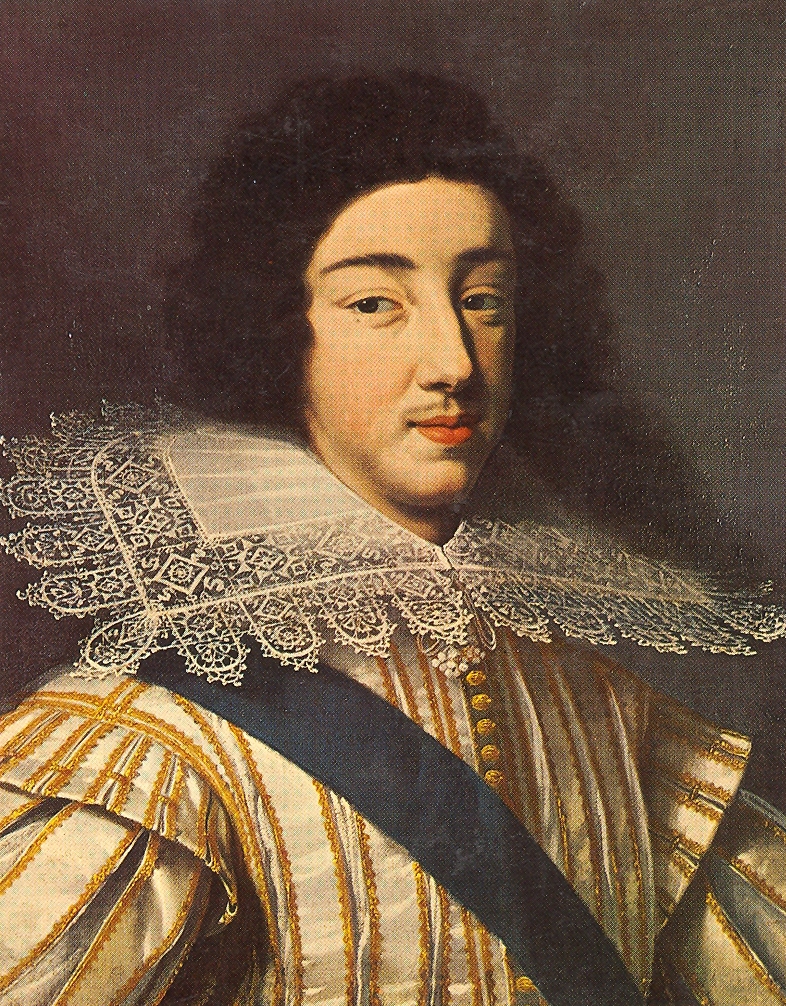
The Court returned to Paris in November and now everything turned against Cardinal Mazarin.
While the city favoured the Monarchy over the rebels, they grew more and more displeased with the Prime Minister… and then the Fronde des Princes teamed up with the Fronde parlementaire to demand the arrested Princes to be set free and ordered everyone not to listen to Mazarin anymore. Gaston de France, lieutenant-general of the Kingdom, was the one they should listen to now. On February 2 in 1651, things looked really bad for Mazarin. Gaston broke with him in public and the parliament demanded Mazarin to be exiled from France.
Cardinal Mazarin sneaked thus out of the city in disguise and fled to Saint-Germain, then headed to Le Havre, where the prisoners were kept. Anne d’Autriche intended to join Mazarin in Saint-Germain, along with the young Louis XIV, but was forced to remain in Paris due to the Palais-Royal being under siege by the frondeurs in order to keep the King in town. Someone had hinted to Gaston that they might want to leave Paris. Regent and King are now sort of prisoners of Gaston in their own capital. The situation is so tense that Anne had no other chance to calm it than to let the Parisian mob inside the Palais. There they find the King, now twelve years old, in bed. Louis pretended to be fast asleep as the mob entered his bedroom and was at once taken by the image of their King slumbering peacefully. Not knowing what to do, nor what Mazarin would do, and pressured from all sides. Anne d’Autriche agreed to have the Princes released. They return to Paris with much ado and are pardoned by the King, against his will. His and Anne d’Autriche’s imprisonment in the Palais lasted for over three months, before the Regent was able to act on her own again.
In the meanwhile Condé’s power and influence rose to new heights… until he opposed the marriage pact made to seal the union of both Fronde parties. His brother Conti was supposed to marry Charlotte-Marie de Lorraine, daughter of the Duc de Chevreuse. This Mademoiselle happened to be the mistress of the coadjutor of Paris and Condé’s refusal did not go down well with everyone. Regent and coadjutor teamed up against Condé, who fled to Saint-Maur in fear he might be arrested again, and came to a secret agreement. (Mademoiselle de Chevreuse was then promised to Paul Mancini, nephew of Mazarin and close friend of Louis XIV, who died the following year during one of the last battles of the Fronde.)

The last phase of the Fronde is heralded by the coming-of-age of Louis XIV. On September 7 in 1651, aged thirteen, Louis XIV is officially declared to be old enough to speak for himself and only a few days later, he rallied everyone against Condé. What followed is called the Fronde du Grand Condé.
Condé in turn promised the Spanish to hand them a French port in return for money to raise troops and controlled a part of the Kingdom. Louis XIV and Anne d’Autriche left Paris again and travelled to Poitiers in company of Turenne. It was their goal to push towards Condé’s headquarter and liberate all areas controlled by him. They were successful in their mission and cornered Condé, who then went for all-or-nothing, and gathered more troops in order to take Paris. A bit of a race started as everyone headed back to Paris. Condé got there first. The city was officially under the control of Gaston and unofficially under control of the parlement, since Gaston was influenced by some of its members. It is his daughter, Anne-Marie Louise d’Orléans aka la Grande Mademoiselle, who eased Condè’s way into the city. Apparently with approval of her father, she ordered the canons of the Bastille to fire at the royal troops, thus allowing Condé to slip into the city. It was not the first time she got herself involved in the Fronde, but this time it meant her disgrace in the eyes of the King. He watched how the canons were fired at his own troops, by his cousin, in company of Mazarin, who had just returned from exile.
Inside the city, Condé caused havoc. The Hôtel de Ville was burned down, which made the Parisians change sides. They got rather sick of it all and sought peace. In order to achieve it, Mazarin left and pretended to go into exile again. In the end, Condé, largely isolated, had to give up. He left Paris along with his last supporters.
Louis XIV entered his capital again on October 21 in 1652 and order was restored again. The rebelling Princes are condemned to lose their titles, possessions, and freedom. Gaston de France is advised to leave Paris and retire. His daughter exiled. The King orders his magistrates not to “take any knowledge of the affairs of the State“.
Growing up during this time was certainly not pleasant for the Sun King. He was forced to flee his capital several times, was smuggled out of it, travelled in the trunk of a carriage, lived like a vagabond King, travelling from castle to castle, without ever feeling entirely safe. He witnessed how Princes of the Blood turned against the Monarchy, how his cousin fired canons at his troops. He pressed his eyes tightly shut as the mob stood in his bedroom. He saw his mother and Regent cornered from all sides. His Prime Minister cursed. His own Kingdom in rebellion.
This period of unrest smoothed Louis XIV’s way to install himself as absolutist Monarch. It took him long years to forgive those involved and although he himself was not opposed, it showed him how easily those who were supposed to be the most loyal, could turn into enemies. The Fronde played a big role in the understanding of his own role as King. He understood that, in order to prevent it from happening again, it was necessary to bind his nobility to him. Nobody apart from him should have the power to raise troops. He should have the last say in everything. His family should be dependant on him, especially his brother. His nobility should serve him.

